Best Brandy Brands: 21 Must-Try Bottles of Cognac, Armagnac, and More to Drink Now
The best brandy brands probably don't come to mind as easily as the best whiskey, tequila, and vodka. Or even gin and rum for the matter. But there was once a time when brandy was the star spirit and we're here to tell you why you should be drinking brandy in modern day.
Technically the oldest documented spirit to be distilled, brandy alcohol is an incredibly widespread category, with different iterations found across the globe. The main hallmark of brandy liquor is that its core component is fruit-based. In countries like France and Italy, brandy is most often created from grapes, but you can also find versions of brandy made from apples, pears, and more.
Men’s Journal aims to feature only the best products and services. We update when possible, but deals expire and prices can change. If you buy something via one of our links, we may earn a commission.
If you’re new to brandy alcohol, our Best Overall pick is Argonaut Fat Thumb Brandy. This California-made, 86-proof blend of alembic and Coffey still brandies is complex and known for its flavors of caramel apples, rich oak, coconut, and toasted vanilla beans. It's lightly spiced and mellow, making it easy to drink.
Read on to learn what is brandy (including its many varieties), our favorite brandy brands and the best brandy bottles, how to make classic brandy cocktails, and the best glassware to enhance your brandy tasting experience.
What Is Brandy
Brandy is made from distilled wine or a fermented fruit mash, which is then aged in oak barrels, says David Warter, vice president of Winemaking and Distillation at E&J Gallo Winery, which makes Argonaut and Germain-Robin brandy.
Brandy's hallmark amber color typically comes from the aging process, and it's about 50 percent alcohol by volume. Because most brandies are a blend of several different barrels, harvests, and grape varieties together, it's incredibly complex and nuanced.
“Wine is the most flavorful raw material of all spirit production," Warter says. "This flavor carries through to the final product, which has long been cherished for its versatility. We're looking to transform the perception of brandy, challenging the notion that it's solely an after-dinner indulgence for an older demographic.”
Related: 25 Best Red Wines to Drink This Thanksgiving: Sommelier Picks
Types of Brandy
Just as whiskey is used as a catch-all umbrella term for bourbon, rye, and Scotch, brandy is an upper funnel wherein the likes of Cognac, Armagnac, pisco, Calvados, grappa, and more types of brandy fall into. There are technically over a dozen different varieties that can be categorized under the label of brandy. The two best-known types are Cognac and Armagnac, which are both produced in France, but there are numerous others worth paying attention to (and adding to your bar cart).
Cognac vs Brandy
The most popular type of brandy alcohol, Cognac is an aged, grape-based brandy that's smooth and rich thanks to a laborious and time-intensive process guarded by several legal parameters—from the grapes that distillers are able to use (mainly ugni blanc) to various aging and blending restrictions.
“Cognac must be produced in the Cognac region of France," says Eric Forget, cellar master at HINE, one of the oldest leading brandy brands. "This region is a controlled designation of origin, or AOP (Appellation d’Origine Protégée), with specific rules and regulations regulating the quality of all styles of Cognac.”
Cognac has two highly desirable districts that are known as premier crus (read: first growth): Grande Champagne and Petite Champagne. These zones have superior terroir among the vineyard.
"Limestone-rich soil coupled with cool oceanic climate delivers the finest, most delicate wine, which, when distilled, gives way to a beautifully floral, elegant, rich, and smooth Cognac—a brandy liquor style that cannot be replicated anywhere else in the world,” Forget says.
Moreover, Cognac is required to be labeled according to the period of time the youngest brandy in a blend has spent aging in oak. Those labels fall into three main categories:
VS (Very Special): This indicates the youngest brandy in the blend has been stored in a cask for at least two years.
VSOP (Very Superior Old Pale or Very Special Old Pale): This shows the blend's youngest brandy has been stored for at least four years.
XO (Extra Old): The youngest brandy has been aged for at least 10 years. Note: XO can fetch a hefty price tag that reaches anywhere from over $100 to over $1,000.
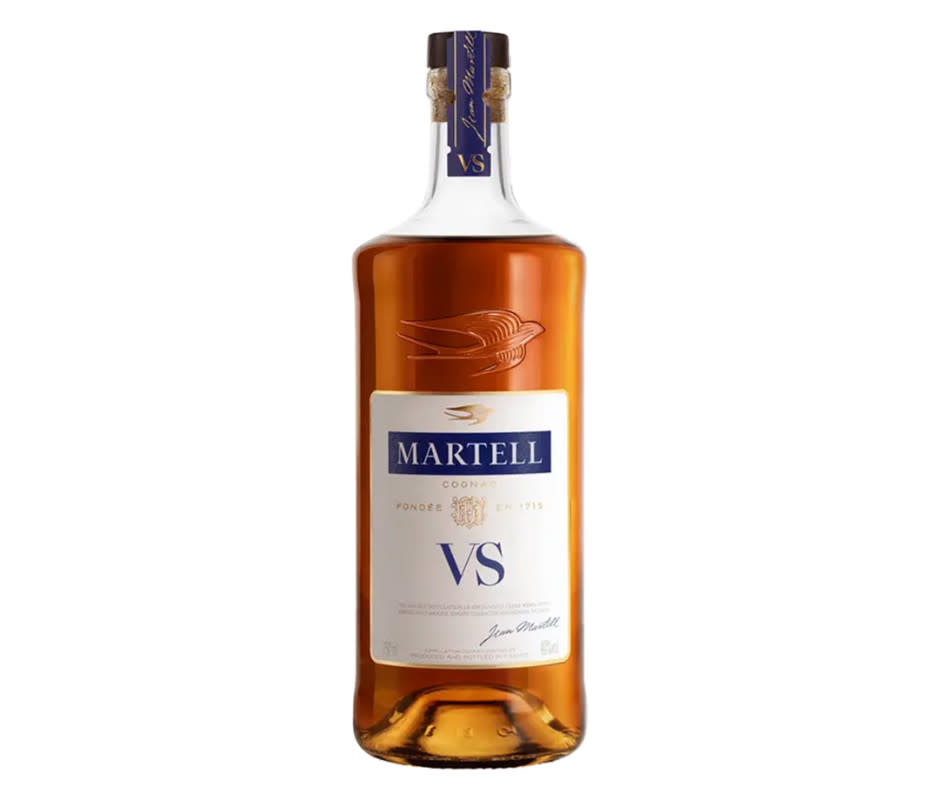
Courtesy Image
Martell VS Cognac has a similar price point to Hennessy, but has a much greater value. It combines eaux-de-vie from the distinguished Borderies, Grande Champagne, and Petite Champagne crus, and is aged in fine grain oak barrels. With a flavor profile highlighting candied fruit, spices, and vanilla, this Cognac offers a distinct and accessible choice for enthusiasts and newcomers to the category.
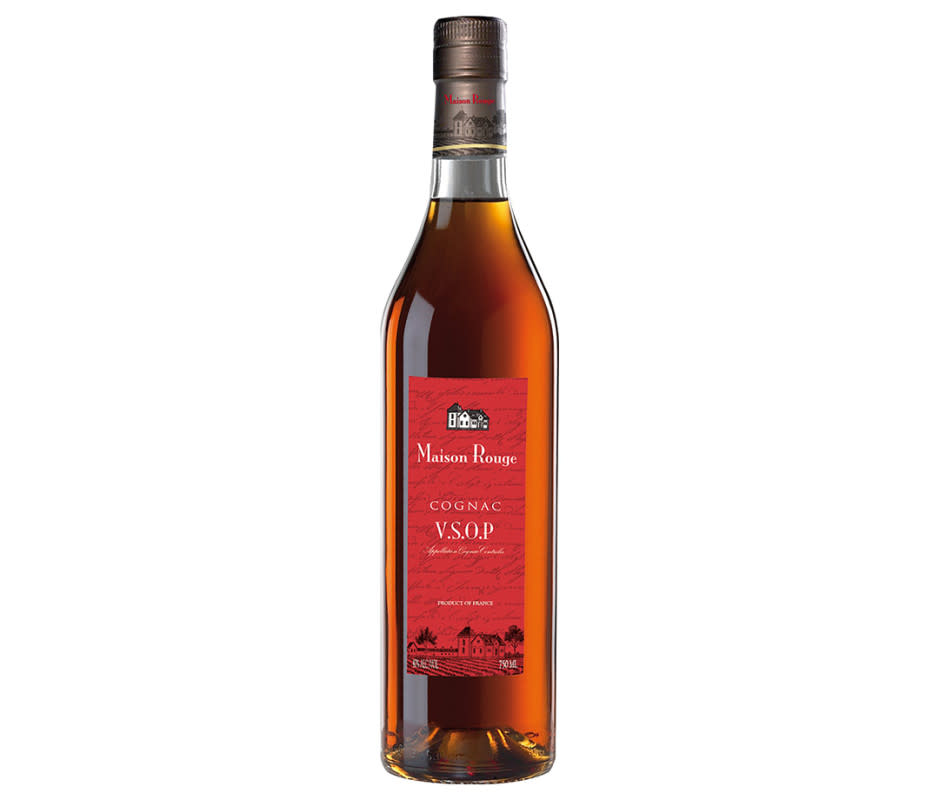
Courtesy Image
An amazing bang-for-your-buck Cognac, Maison Rouge VSOP will set you back less than $40—perfect for mixing into your next Vieux Carré. A deeply colored and flavored cognac, you’ll taste notes of vanilla, tobacco, cedar, cinnamon, and nutmeg on the palate, with a fruity nose that has hints of toffee. It's favored by bartenders for use in classic brandy cocktails, thanks to balanced, nuanced flavors and a price point that won’t hurt your wallet.
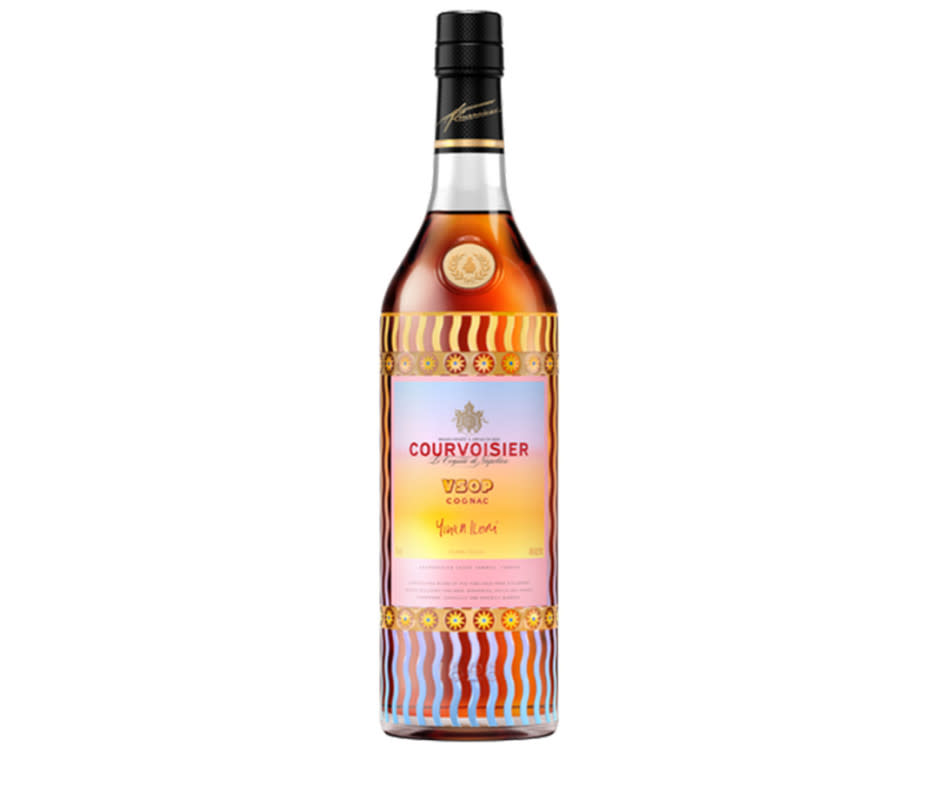
Courtesy Image
This delightful collaboration between British designer Yinka Ilori and Courvoisier seamlessly merges the world of art and spirits. With a bottle design that mimics Ilori’s vibrant and lively signature style, Yinka Ilori x Courvoisier VSOP is among the most beautiful spirits bottles to showcase on a bar cart. Inside, Courvoisier VSOP is rich and harmonious, with notes of ripe fruits, vanilla, and a subtle hint of oak. Only 1,000 bottles are available to purchase globally.
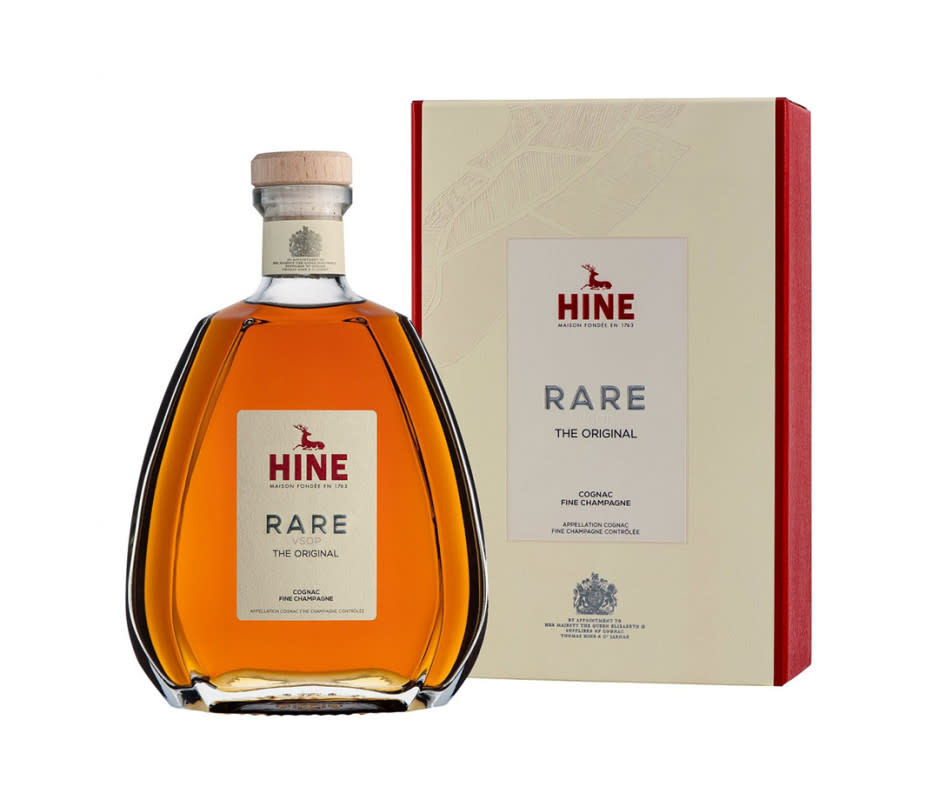
Courtesy Image
A blend of 60 percent grande and 40 percent petite Champagne grapes, HINE Rare VSOP Cognac is a signature of HINE, whose estate sits along the sun-soaked banks of the River Charente in Jarnac. Aged between six and 12 years in fine-grain oak from northern France, this VSOP Cognac presents a rich aroma with notes of jasmine, acacia, vanilla, and oak. It's been awarded a Gold Medal at the International Wine & Spirits Competition.
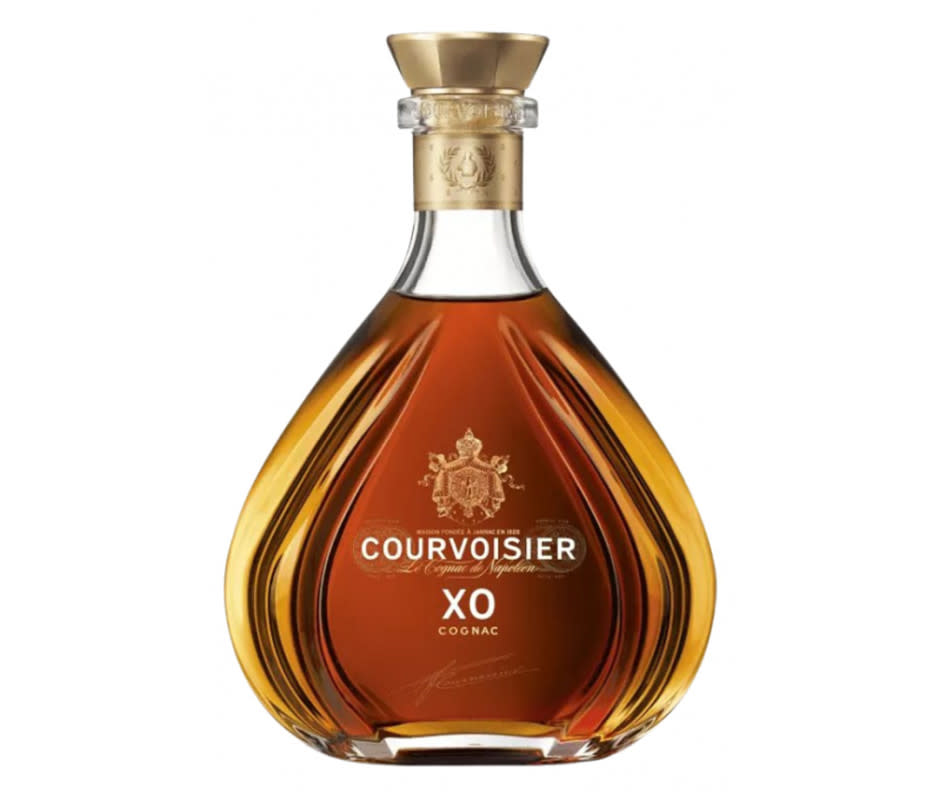
Courtesy Image
Meticulously blended from 40 different eaux-de-vie aged between 11 and 25 years, Courvoisier XO Cognac achieves a remarkable depth of aroma and flavor. Its complex tasting notes include orchard fruits, candied orange, and iris. You’re left with the satisfying gourmand taste of crème br?lée on your palate.
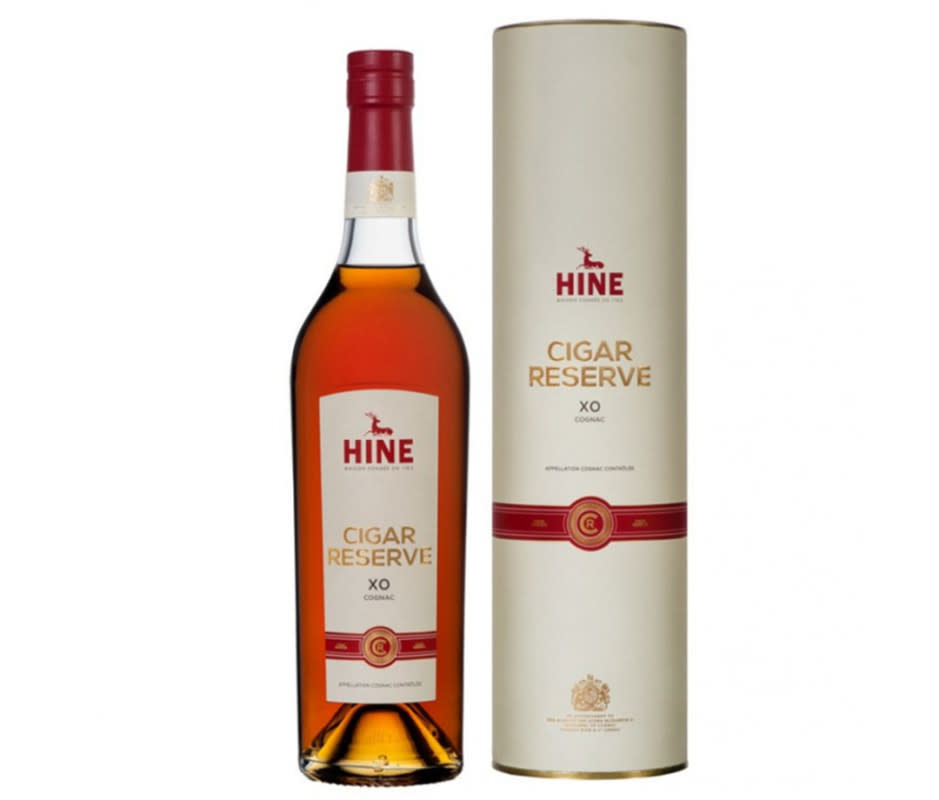
Courtesy Image
A French cru (delimited growing region) known for producing grapes with robust, unique aromatic profiles, Fins Bois is usually utilized by Cognac houses to create its younger blends. HINE Cigar Reserve XO is the only one in the portfolio to include a Fins Bois blend, and is unique in its age statement of at least 15 years—producing a Cognac with a strong palate of spice and tobacco that pairs well with a great cigar.
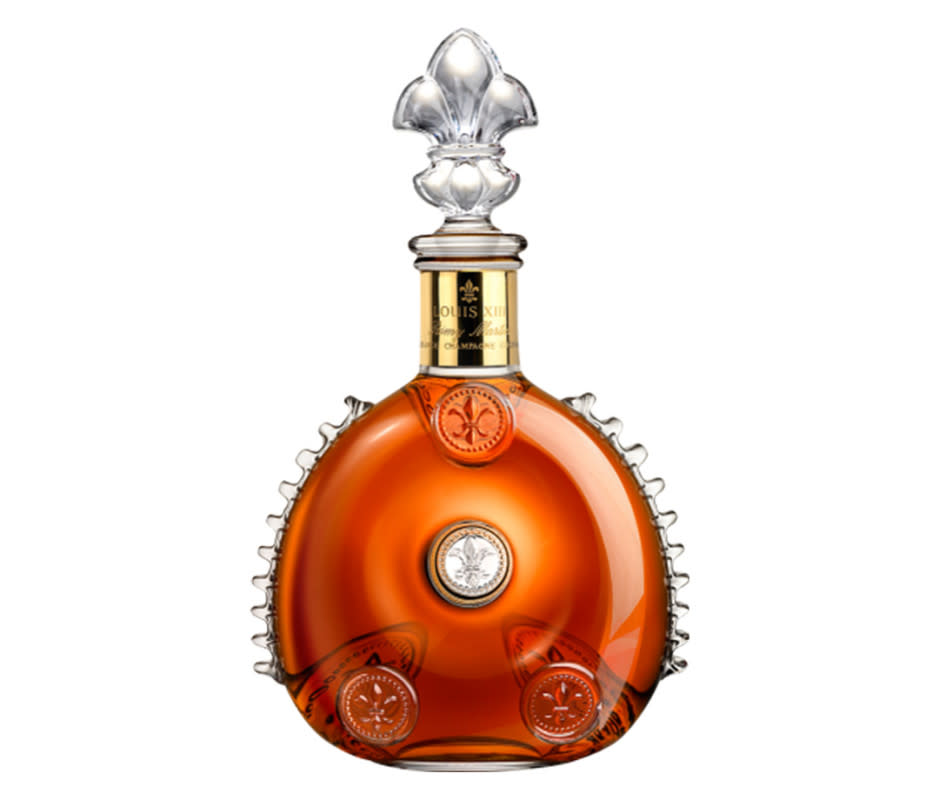
Courtesy Image
Coming in at around $4K, Remy Martin Louis XIII Cognac is no casual purchase. Inside its iconic hand-crafted glass decanter, though, is some of the most celebrated Cognac that (a lot of) money can buy. Crafted by Remy Martin since 1874, it consists of a mix of over $1,000 different eaux-de-vie, some aged for 100 years, that are blended to perfection for a supremely complex flavor.
Armagnac vs Cognac
The oldest type of brandy alcohol in existence, the history of Armagnac dates all the way back to Roman times. Now, it’s produced in a landlocked region of France located south of Cognac. While Cognac is its closest relative, there are still unique aspects of Armagnac that distinctly make it a connoisseur’s beverage. First of all, it can be made with a wider variety of grapes (though most modern Armagnac is produced with ugni blanc), and it's produced using small continuous stills before resting in oak. The final product has a slightly higher ABV than Cognac and a more textured mouthfeel. What’s more, Armagnac is given a vintage date, unlike Cognac, which is usually a blend.

Courtesy Image
With a legacy dating back to 1893, the Delord distillery's commitment to tradition and craftsmanship shines through in Delord 25-Year Bas Armagnac, especially considering the distillers still use small and antique Sier alembic stills. This Bas Armagnac (Bas-Armagnac is the northernmost part of Armagnac) is celebrated for its deep amber hue, with distinct notes of leather, dates, toffee, and caramel that are almost reminiscent of bourbon and Scotch. The culmination is a subtly nutty finish, highlighted by the flavors of cashew, hazelnut, and vanilla.
Fruit Brandy
Distilled from any fruit-based mash, wine-based brandies such as California brandy are categorized as either regular or “pomace,” meaning it’s distilled from the skins and peels of grapes, as well as the juice, giving the finished product a different mouthfeel and earthier taste. You can also find tons of examples of brandies distilled from fruits such as apples, pears, cherries, and even blackberries. Sometimes labeled as eaux-de-vie, French for “waters of life,” these variations are generally not aged.
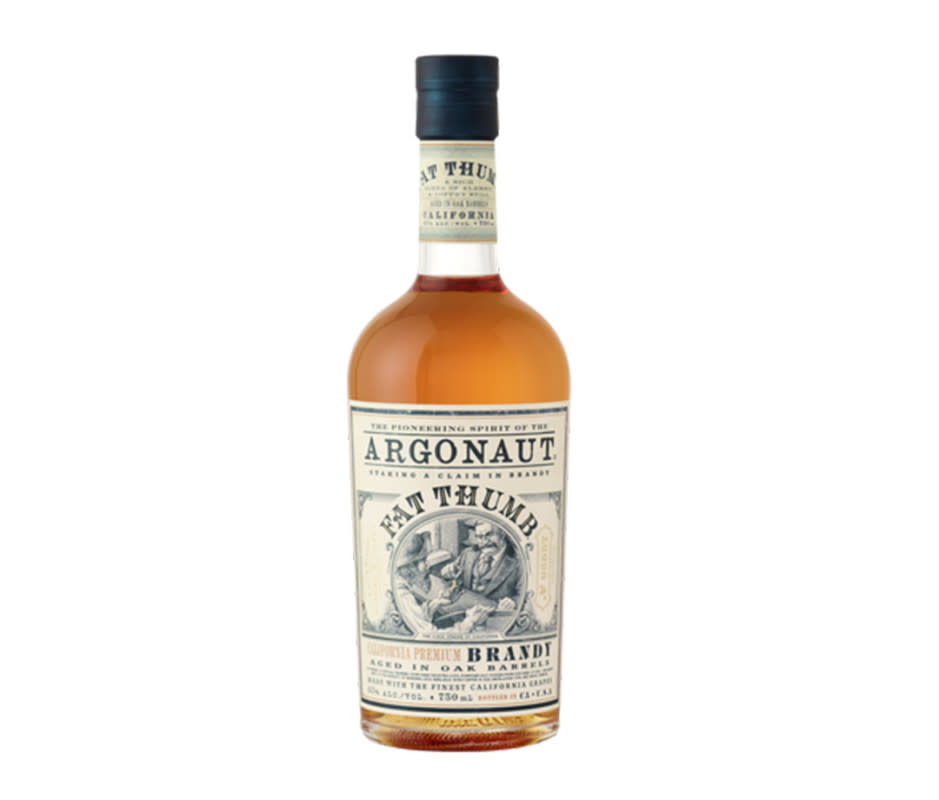
Courtesy Image
An innovative California brandy, Argonaut Fat Thumb Brandy boasts a harmonious blend of premium Napa grapes, resulting in a rich and velvety spirit that stands out in the world of fine brandies. With tasting notes that dance between hints of caramel, vanilla, and a subtle touch of oak, this is a sip of the West Coast's finest.
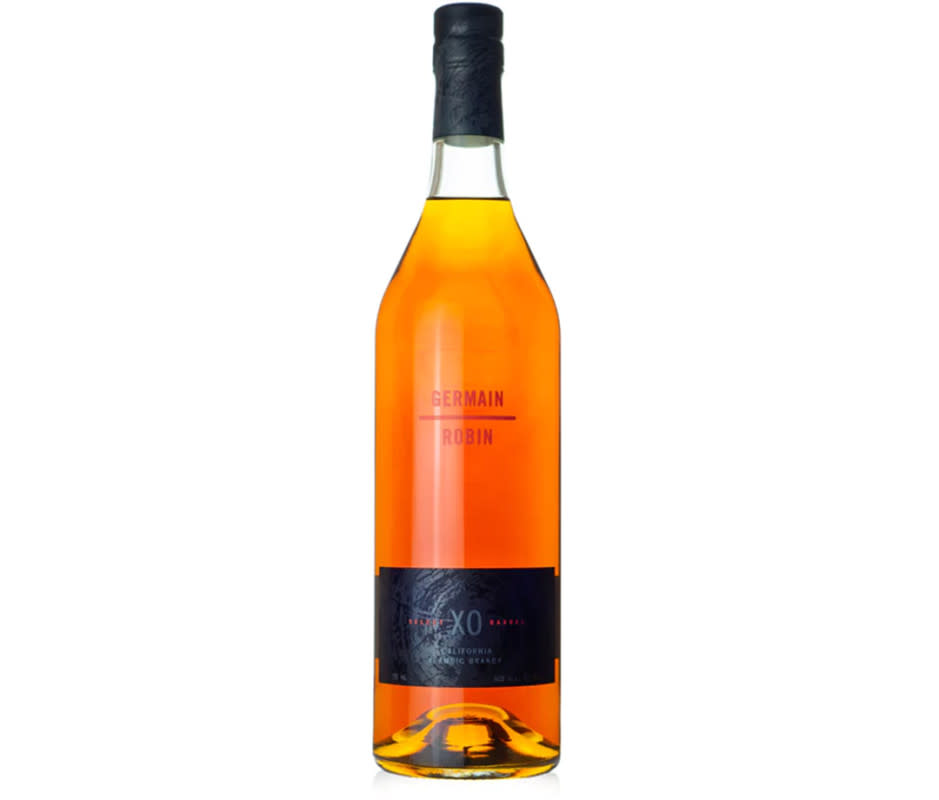
Courtesy Image
A long-celebrated California brandy, Germain Robin Select Barrel XO has been a fan favorite since its first release in 1996. A blend of 12 or so aged brandies, crafted by a dedicated team at the Germain Robin distillery, this exceptional brandy undergoes a meticulous aging process in French Limousin oak barrels. You can expect to savor a blend of dark cherry, stone fruit, toasted vanilla, and oak, with a velvety texture and lingering finish.

Courtesy Image
Also available sans spice, St. George Spiced Pear Brandy is made using 30 pounds of fresh, whole Barlett pears. Its spiced iteration takes the nuanced, floral taste of pear and combines it with pear juice, whole cloves, Saigon cinnamon, and organic cane sugar for an earthy, rich taste that’s great when sipped or mixed into hot cocktails.
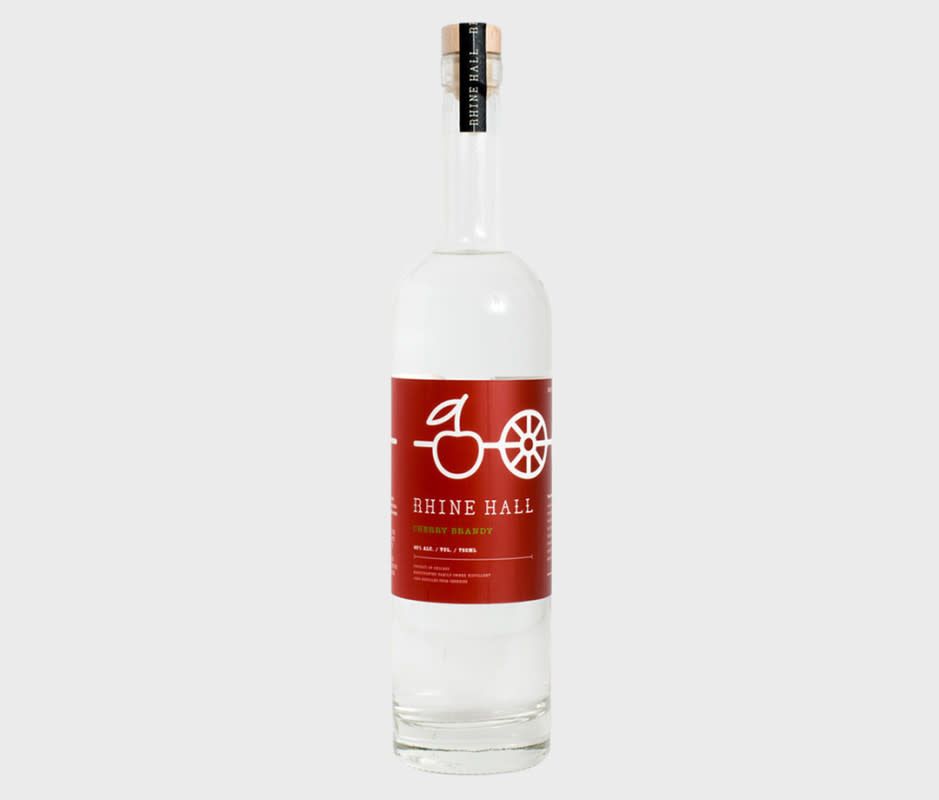
Courtesy Image
Distilled from tart cherries found in Michigan and Wisconsin, small-batch Rhine Hall Cherry Brandy represents the American iteration of what's commonly known throughout Europe as Kirsch: clear brandy made from Morello cherries. The juicy, bright flavor of cherry is given a nutty nuance thanks to the reintroduction of cherry pits at the end of fermentation.

Courtesy Image
Don’t let its incredible affordability fool you—Hiram Walker Blackberry Brandy is good stuff. A flavored brandy made in the U.S., it combines the deep flavor and sweetness of ripe blackberries with a rich, smooth finish, making it one of the best blackberry brandies on the market. This is definitely a crowd-pleaser.
Apple Brandy and Applejack
Apple brandy, both unaged and barrel-aged, is made around the world by distilling the juice or pulp of apples. However, it can go by several titles based on where in the world it’s being distilled and under what guidelines, such as applejack in the U.S. and Calvados in France.
A true American spirit, applejack is widely considered the country’s first iteration of moonshine. The original product was created by American colonists using a rough and ready technique called “jacking,” or freezing fermented apple cider, then skimming the ice off until what was left was around a 40-proof product. Today, there are dozens of craft distilleries in the Northeast that specialize in applejack, often aging it in bourbon barrels to deepen the flavor and add more toasted vanilla and spice notes.
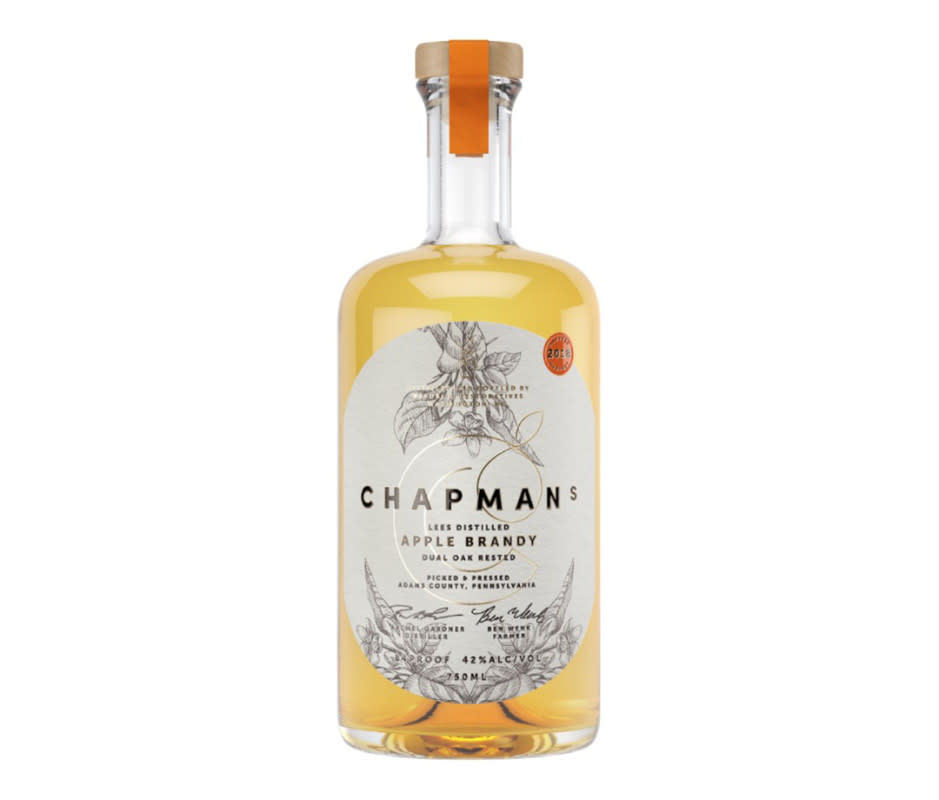
Courtesy Image
Washington D.C.’s first apple brandy, named after the venerated Johnny “Appleseed” Chapman, Republic Restoratives ‘Chapman’s’ Apple Brandy is distilled using cold-pressed farm apples from Pennsylvania. After a few months of resting in French and American oak, the resulting liquid is bold and fruit-forward, with warming notes of baking apples as well as vanilla and ginger.
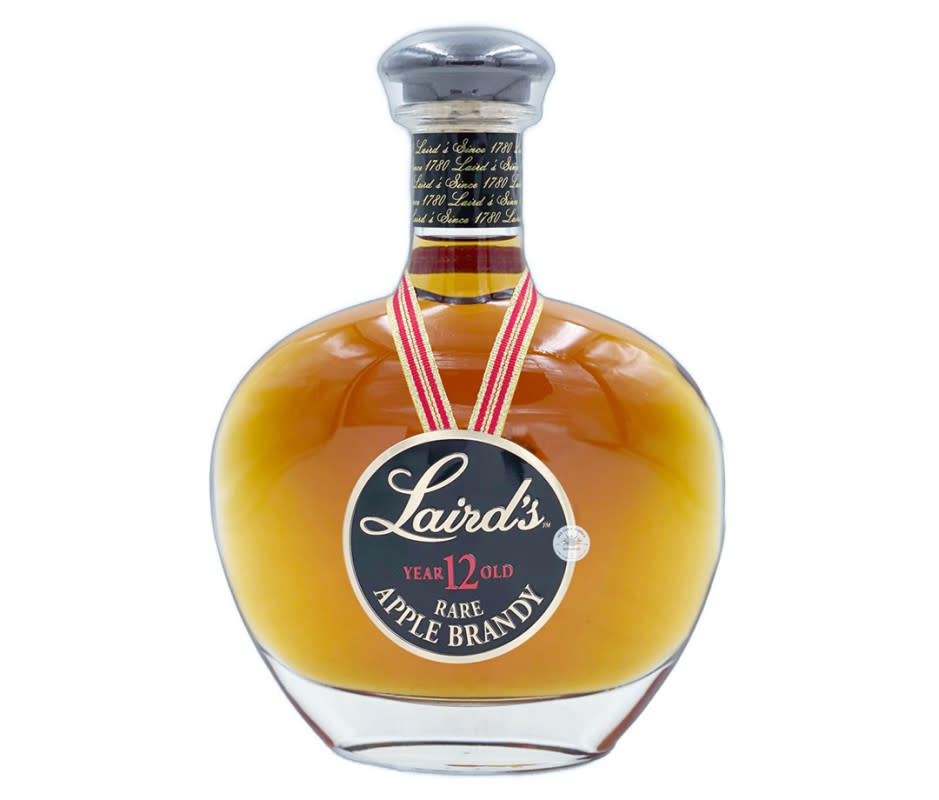
Courtesy Image
First conceived in 1995, Laird’s 12-Year-Old Rare Apple Brandy is a rich and complex expression that stands as the pinnacle of aged apple brandy. Aged for 12 years in charred oak barrels, it boasts a rich amber hue and a nuanced flavor profile, showcasing the perfect blend of hand-selected apples. Enjoy aromatic notes of ginger and baking spices.
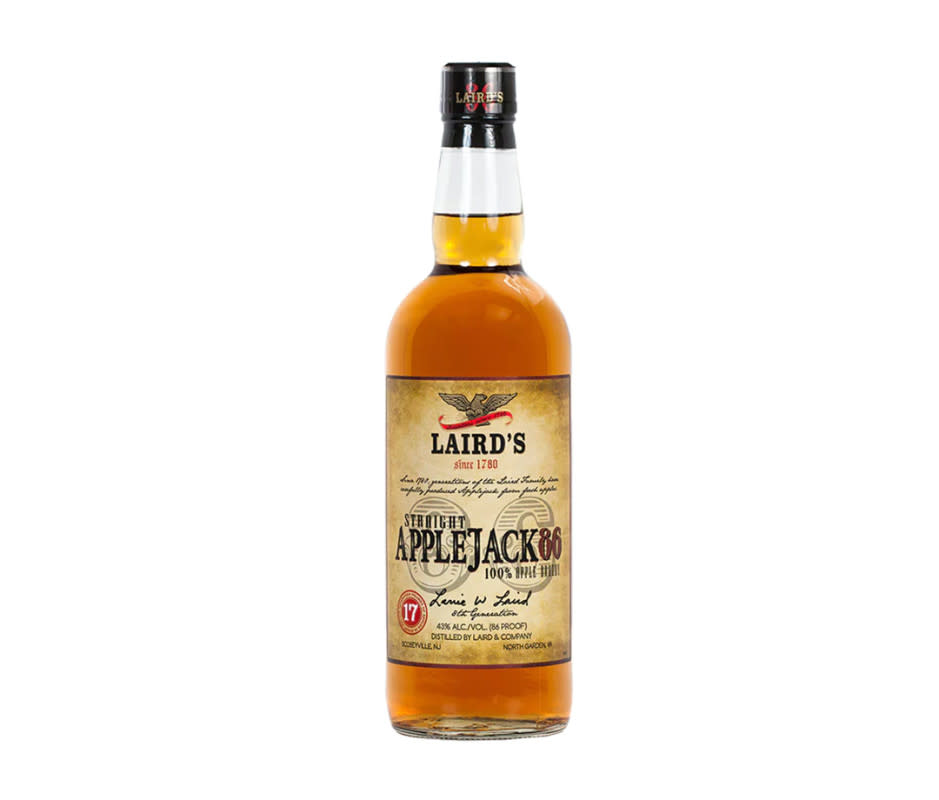
Courtesy Image
A revival of the distillery's historic pre-Prohibition 100 percent apple brandy at its post-Prohibition proof of 86 (43% ABV), Laird's Straight Apple Jack 86 has the perfect balance of apple sweetness and just the right amount of kick. Great for mixing in cocktails or sipping neat, a bottle of this is guaranteed to liven up any holiday party.
Calvados
A smooth aged brandy liquor with strong apple characteristics, Calvados is exclusively produced in the Normandy region of France, thanks to its Appellation d’Origine Contr?lée (AOC) status. Producers of Calvados can use four “types” of apples: sweet, bittersweet, bitter, and bittersharp. Each type brings its own flavor and complexity to the mix. Sometimes perry pears are added to the blend. The fruit is then pressed, fermented, and distilled into an eau-de-vie, which must be aged for at least two years in oak. For those just getting into the world of brandies—Calvados can be an approachable gateway, thanks to its strong and recognizable apple flavors.
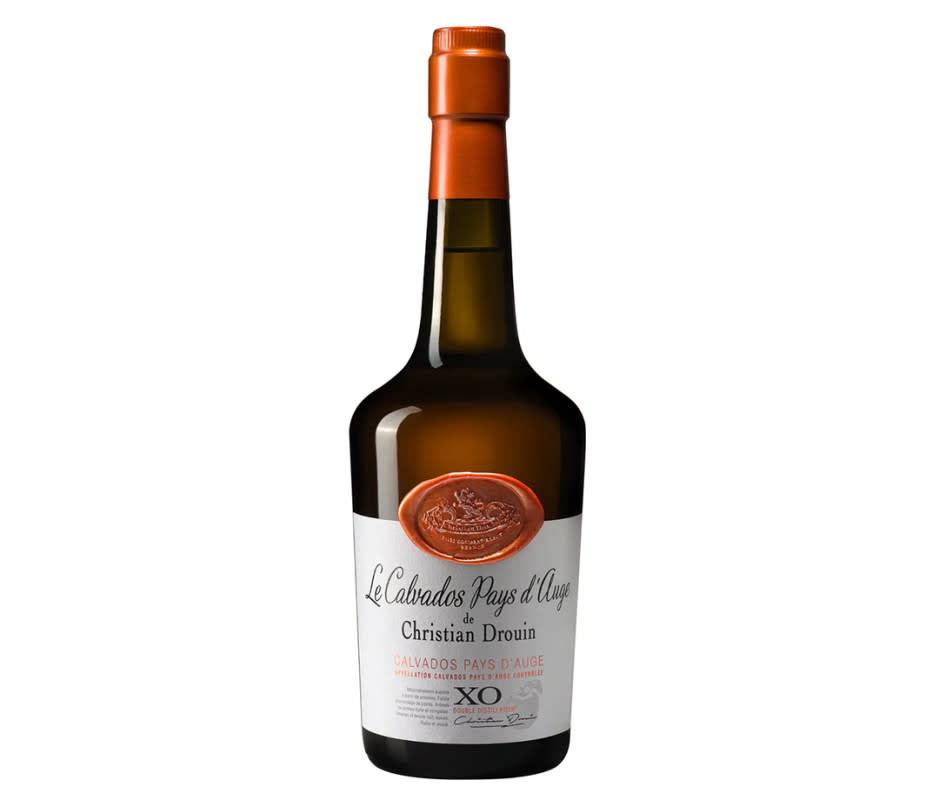
Courtesy Image
Christian Drouin Calvados XO Pays d’Auge is a delicious aged apple brandy, crafted from double-distilled bitter, bitter-sweet, sweet, and sharp cider apples from the orchards of Normandy. Aged for a minimum of six years in a variety of casks, including some former wine casks, both its bouquet and palate exude all manners of apple: fresh, baked, and stewed, as well as vanilla and some subtle spice.
Pisco
The national spirit of both Peru and Chile, pisco is technically an unaged brandy—similar to an eau-de-vie. Pisco has a Denomination of Origin (DOI), meaning it can only be made in five coastal valley regions in Peru, or within one of five regions in Chile. The grape-based spirit also falls into three categories: puro, a single-grape varietal; acholago, a varietal blend; and mosto verde, made from musts that haven’t fully fermented (it tends to be lower ABV and more aromatic).
Peruvian pisco must rest for a minimum of three months in a non-reactive container (so, made from a material such as stainless steel, which does not impart a flavor of its own), and never carries an age statement. Meanwhile, Chilean pisco can be aged in oak, and can be distilled multiple times. Pisco is generally delicate and floral in flavor and can be sipped neat or used in cocktails.
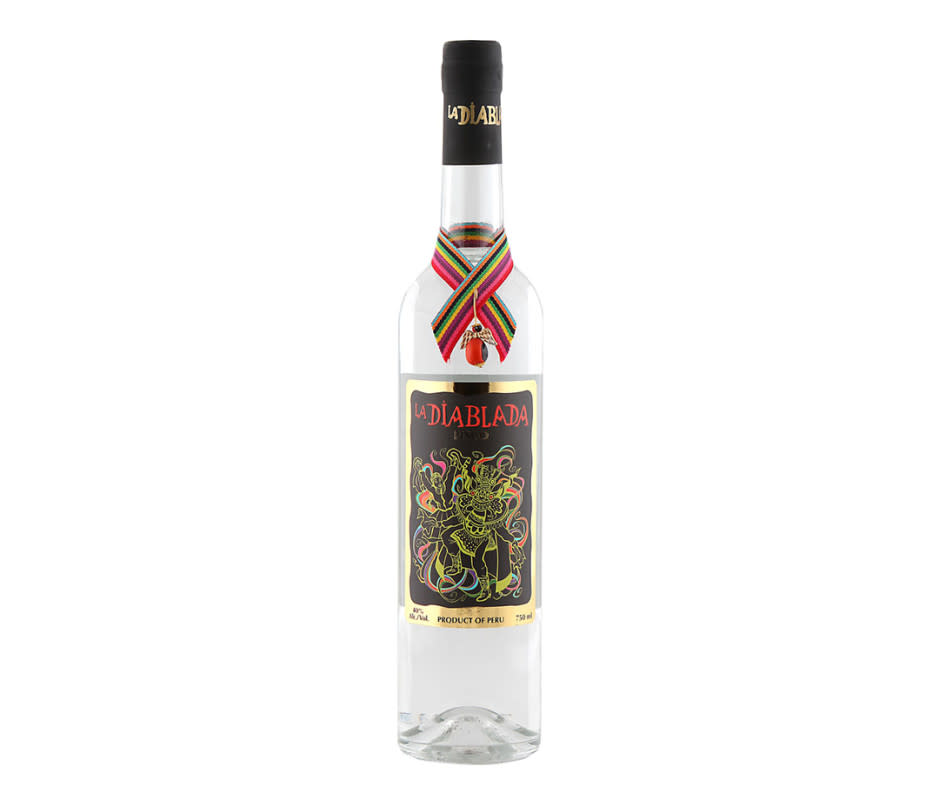
Courtesy Image
Macchu Pisco ‘La Diablada’ is a super-premium pisco from a women–owned Peruvian distillery. It's a great representation of the acholado-style of pisco—meaning it was made from a blend of several different grape varieties. In the case of La Diablada, it was crafted from four: quebranta, moscatel, Italia, and torontel. Meant for sipping, its bouquet is highly floral and delicately sweet, with notes of ripe melon, florals, and a peppery aftertaste.
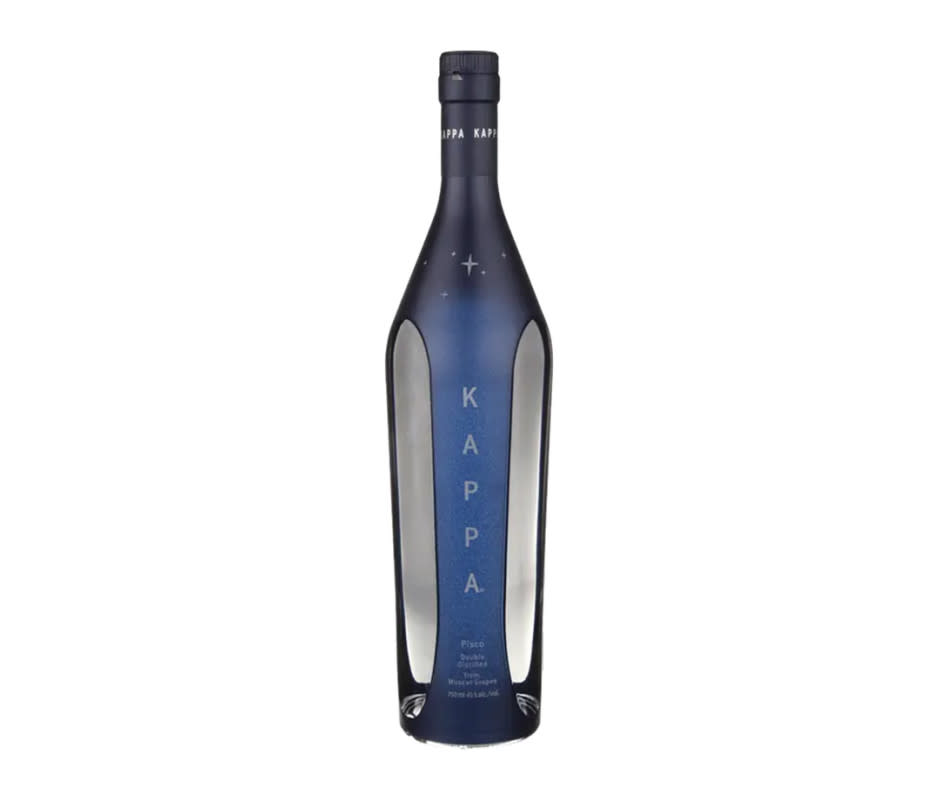
Courtesy Image
Kappa Pisco is a Chilean pisco inspired by a cluster of stars visible from the Southern Hemisphere. It's crafted from muscat grapes, making it highly aromatic with nuanced flavors of citrus peel, fresh grapefruit, and white flowers. Crafted in Elqui Valley, this pisco is actually a venture by the Marnier Lapostolle family, the famed producers behind Grand Marnier.
Grappa
Originally crafted to reduce waste in the winemaking process, grappa is made of fermented pomace. All the leftover grapes, skins, seeds, and stems are added to a still with water to boil. When the steam is condensed and distilled once more, you get grappa. The caveat for grappa is it has to be made in Italy.
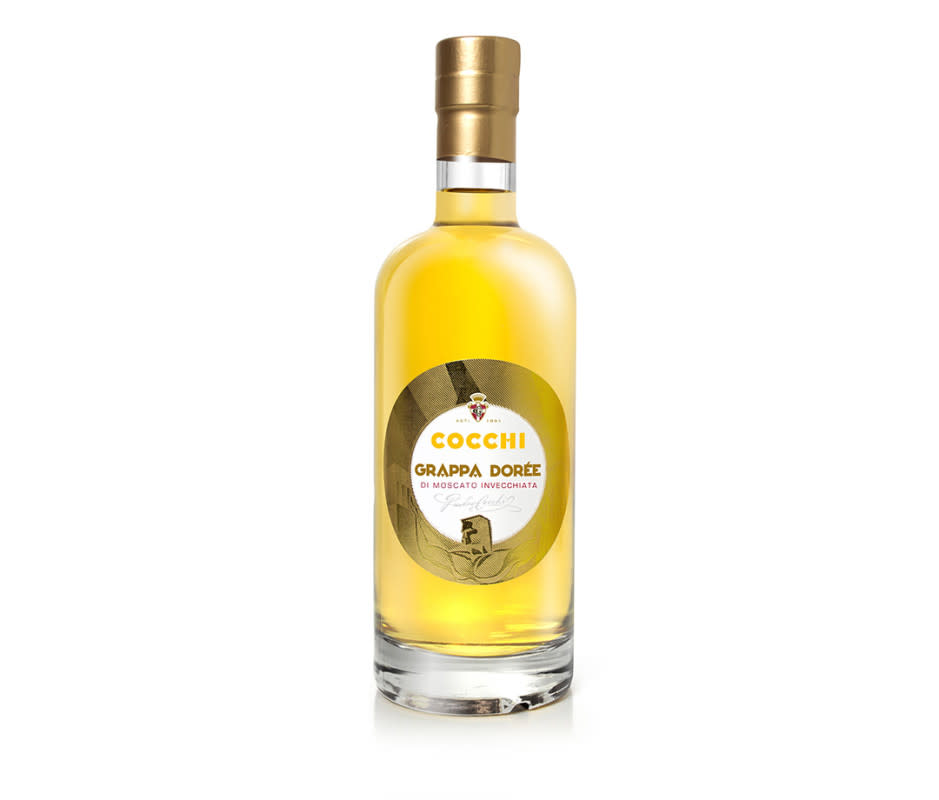
Courtesy Image
What makes a fantastic grappa stand apart from the pack is its fragrance—which should be bright, clear, and nuanced, reflecting terroir in a similar way to wine. Cocchi Grappa Dorée is crafted from moscato d’asti grapes, with an intense fruit-forward bouquet and tasting notes of crisp, almost citric-laced apple and pear.
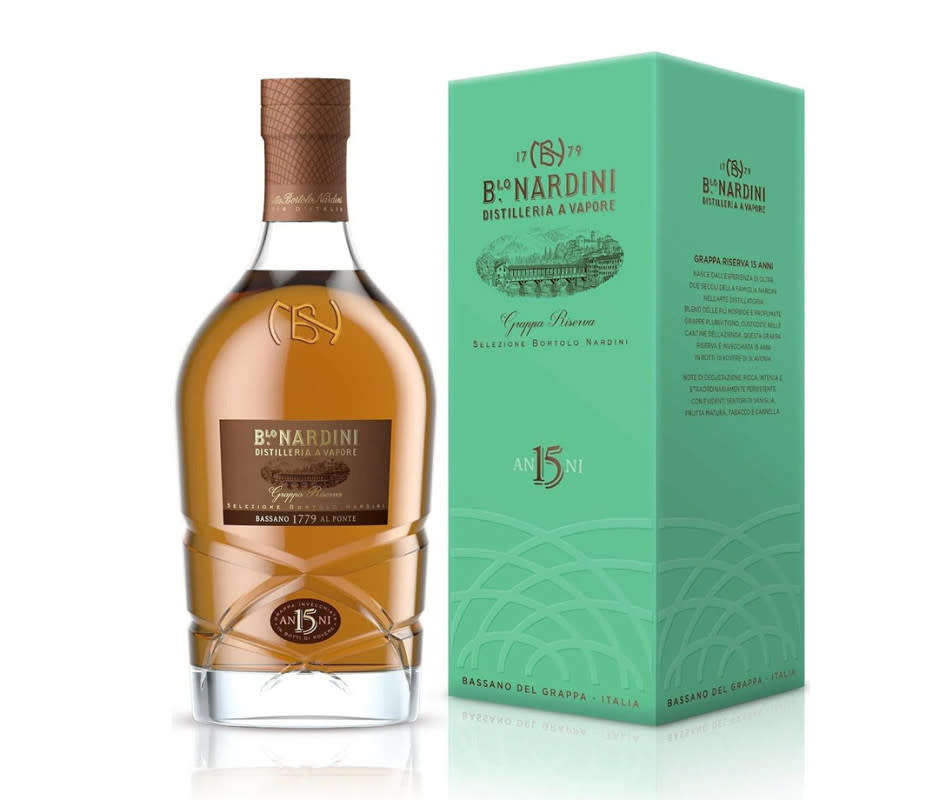
Courtesy Image
Bortollo Nardini, the oldest Italian distillery, has been producing brandies and spirits in Bassano del Grappa since 1779. Nardini Riserva 15 Anni was crafted using centuries’ old techniques, and aged for 15 years in oak barrels. The result is a rich spirit with deep notes of ripe fruit, honey, vanilla and tobacco, perfect for sipping.
How to Drink Brandy
Brandy liquor happens to be a digestif, meaning it can help settle your stomach after a particularly filling meal. As such, you’re likely to see brandy on dessert menus at restaurants. Here's the proper way to sip brandy alcohol neat.
How to Nose Brandy
Pour two ounces into a tulip glass, then let the spirit settle.
Tilt it a few inches under your chin at first. After a minute or two, bring it up to your nose, swirling the glass so the aromas are released.
Inhale through your nose but leave your mouth open so the vapors don't burn your nasal receptors.
Next, oxidize the brandy by placing your palm over the top of the glass. Tilt and rotate it against your palm so the liquid coats all sides. Let sit for 20 to 30 seconds.
How to Sip Brandy
Take a sip and keep it in your mouth for a few seconds, swishing it around gently to further oxidize the liquid.
Swallow, then slowly inhale through your nose and out through your mouth. Next, do the opposite: Inhale through your mouth, then exhale through your nose. This helps to coat your palate.
Consider the tasting notes: fruits, spices, pepper, etc. Sip and enjoy at your leisure.
Brandy Cocktails to Make at Home
Brandy alcohol can be shaken or stirred into a number of cocktails. In fact, it once served as the foundational spirit for numerous classic cocktails that are still beloved today, like the old fashioned, mint julep, French 75, and even the traditional margarita, Warter says. Whether you want to make apple brandy cocktails or riffs on classic whiskey cocktails, these are a great way to explore brandy liquor and find some new favorite brandy brands.
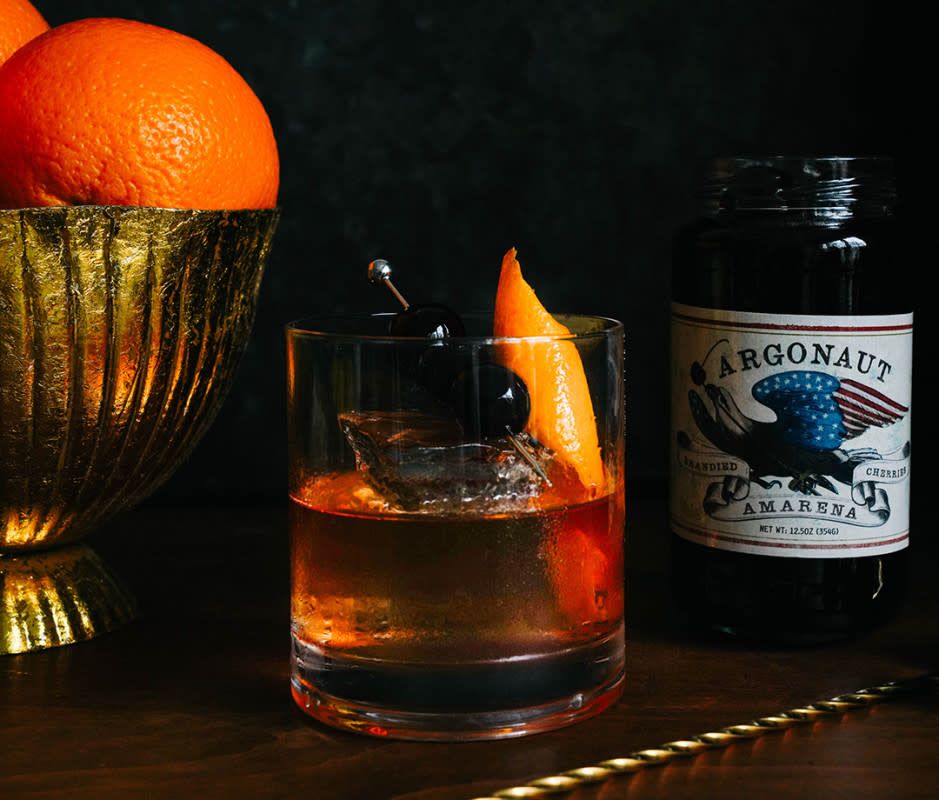
Courtesy Image
Recipe courtesy of Argonaut Brandy
Ingredients- 2 oz. Argonaut Speculator Brandy
- 0.25 oz. simple syrup
- 2 to 3 dashes Angostura Aromatic Bitters
- Expressed orange peel, for garnish
- Argonaut Brandied Cherries or Collins Bordeaux Stemmed Cocktail Cherries, for garnish
- Add ingredients into a mixing glass filled with ice and stir together to combine and chill.
- Strain into a double old fashioned rocks glass (see our favorite whiskey glasses) filled with rock ice.
- Express the oils of an orange peel over the glass, rubbing the peel around the rim.
- Add peel into the cocktail along with cherries.
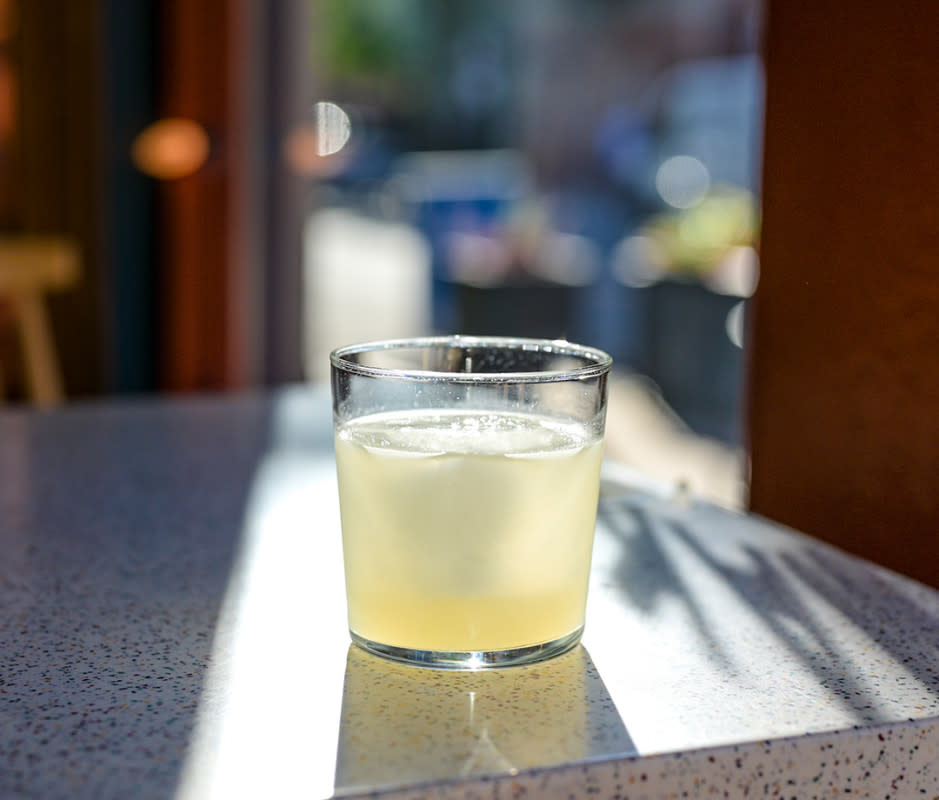
Donnie Massingale
Recipe courtesy of Michael Nauer of Homemakers Bar and Fifty Fifty Gin Club in Cincinnati, OH
“The sidecar first appeared in 1922 and is a variation on the brandy crusta. It’s a rich, refreshing, easy drinker that works as a summer or winter cocktail.”
Ingredients- 1.5 ounces Cognac (we prefer Hardy Legend)
- 1 ounces Cointreau
- .5 ounces freshly juiced lemon
- In a cocktail shaker filled with ice, combine Cognac, Cointreau, and lemon juice.
- Shake until chilled.
- Strain drink into coupe glass.
- Garnish with orange peel.
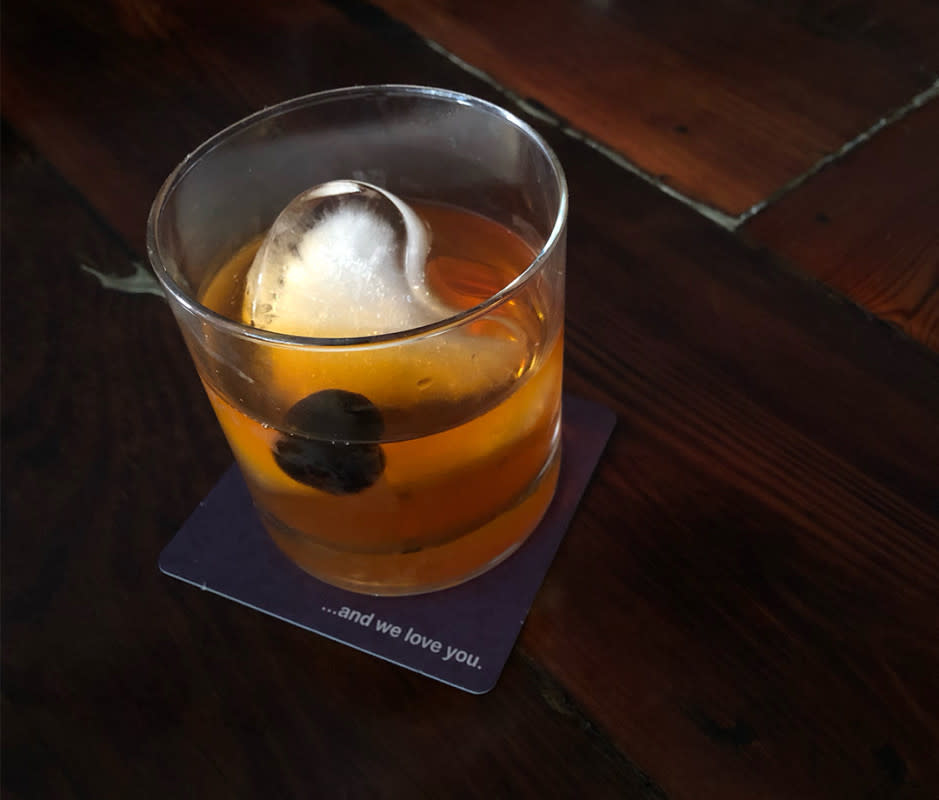
Courtesy Image
Recipe courtesy of T. Cole Newton, president of United States Bartenders’ Guild
“Essentially a split-base Manhattan riff, the Vieux Carré, is named for (and hails from) the French Quarter in New Orleans. The cocktail first appeared in print in 1937 in the pages of the indispensable Famous New Orleans Drinks and How To Mix 'Em.”
Ingredients- 1 oz rye whiskey
- 1 oz Cognac
- 0.75 oz sweet vermouth
- 0.25 oz Benedictine Liqueur
- 2 dashes Angostura Aromatic Bitters
- 2 dashes Peychaud's Bitters
- Collins Bordeaux Stemmed Cocktail Cherries, for garnish
- Combine all ingredients in a mixing glass with ice.
- Strain into an old fashioned glass with a large cube.
- Garnish with a cherry.
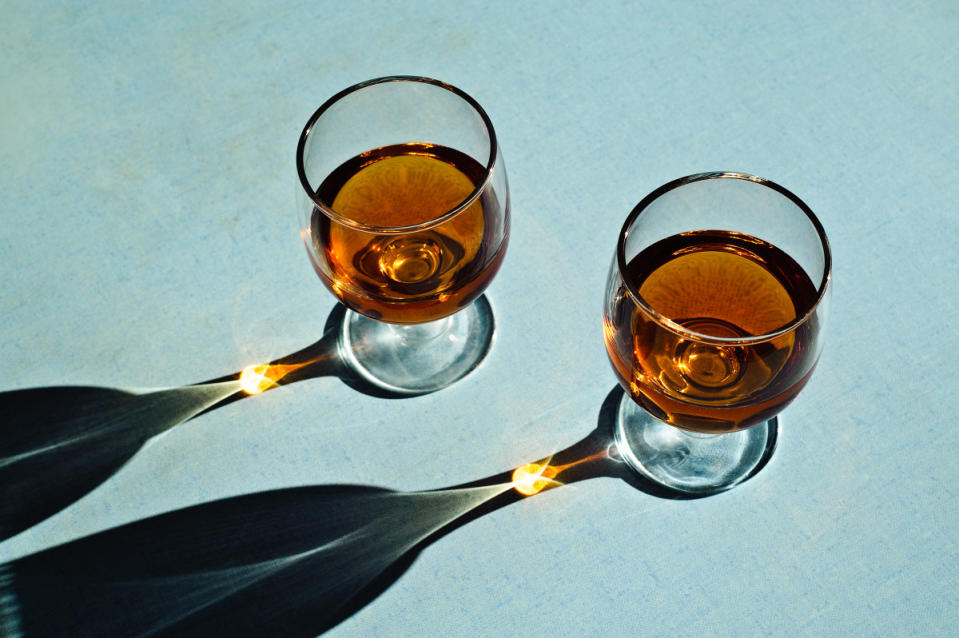
Getty Images
The Best Glassware for Brandy
Most brandy, especially those on the higher end, are truly meant to be sipped and savored. Just like other barrel-aged spirits, brandy is coveted for its ability to demonstrate an unlimited number of tasting profiles. Some brandy might exhibit a rich, syrupy mouthfeel with deep fruit and wood flavors, while others could display as bright and floral, with a crisper mouthfeel.
“Ultimately, the choice of glassware should complement the type of brandy experience you want to create,” says Warter. “A thinner tulip glass or a Glencairn Glass, characterized by its tapered and elongated design, concentrates the aromas and provides an enriching nosing experience. The traditional brandy snifter is too wide and concentrates the alcohol smell too much, not allowing the flavors to be appreciated as much.”
Similarly, Forget says at HINE they opt for a traditional tulip glass, like Riedel Veritas Spirits Glass, when it comes to tasting Cognac, rather than a brandy snifter. “The stem of the glass makes it easier to swirl the drink and allows the aromas to rise evenly, and the top of the bowl is just the right size so the aromas rise straight to the nose, as opposed to hiding at the edge of the glass.”
When it comes to mixing brandy cocktails, Warter says the choice of glass may vary depending on the specific cocktail you're making. Some common glassware options include: a highball or Collins glass for refreshing cocktails such as a brandy highball and rocks glasses for classics like a brandy old fashioned.
Why You Should Trust Us
I'm a journalist who specializes in spirits. I'm always reviewing bottles, discovering new brands, and speaking with distillers, master blenders, and founders in the space. For this roundup of the best brandy, I reviewed brandies and asked experts—David Warter, vice president of Winemaking and Distillation at E&J Gallo Winery and Eric Forget, cellar master at HINE—to highlight their top picks.